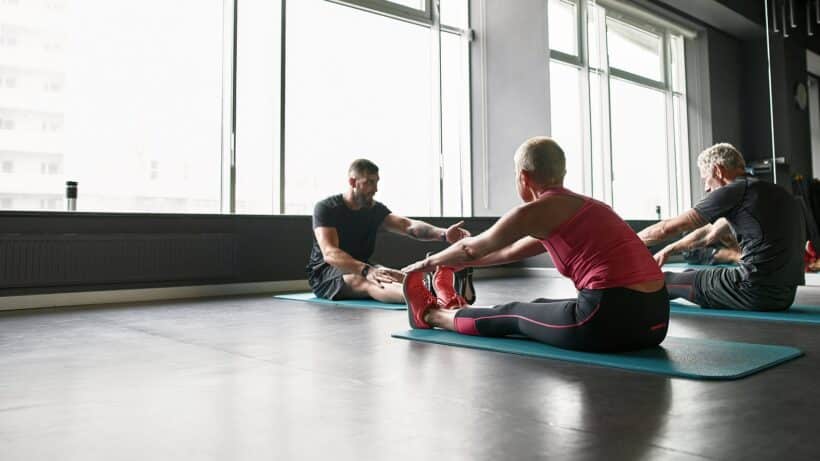
Flexibility is an important part of physical fitness. Being flexible has a number of positive effects on the body, including improving mobility, posture, and muscle coordination, reducing risk of injury and muscle soreness, and less pain. Flexibility can also improve your overall physical performance since flexible muscles and joints can more easily achieve their full range of motion, helping you to perform at your best. Increasing flexibility doesn’t happen overnight, but there are several things you can do to increase your flexibility over time. Here are our top seven tips.
1. Perform Dynamic Rather Than Static Stretching Prior To Exercise
We know it’s important to stretch prior to any physical activity to help warm up the body and reduce injury, but there are different types of stretching and some – like dynamic stretching – are more beneficial than others. Dynamic stretching involves moving back and forth through your joint’s full range of motion without holding or restraining. There’s no “hold” in dynamic stretching, and as you go through a movement, you’ll gradually increase your range of motion. This makes stretching more effective. Examples of dynamic stretching include leg swings, hip openers, and butt kicks.
2. Target Tight Areas
If you have areas on your body that feel particularly tight, or if you struggle more with certain stretches, those are likely the areas that need the most focus and attention. Pay attention to how your body feels when you stretch and perform physical activity and if you’re having tightness or pain in one area or another, you’ll want to target those with stretches to improve their strength and flexibility.
Additionally, your lifestyle can highlight parts of the body that need focus. For example, if you sit at a desk all day, you may need to stretch your chest and the front of your hips more than other areas.
3. Stretch Often
Stretching can be done more than just before and after a workout. Stretching throughout the day, or at least every day, can help improve your flexibility over time. If you don’t work the muscles and joints, they won’t improve. However, just be sure you’re being safe – avoid straining, pressure, or pain in a joint.
4. Maintain Good Posture
Improving your posture while sitting and standing can help improve flexibility. When sitting, driving, texting, working on a computer, or similar activities, your head is in front of your body and your shoulders are rounded, which is an unnatural position that can cause tightness. Sitting up straighter can help ease tightness in your upper back, shoulders, and neck, which can in turn help those muscles maintain strength and flexibility.
5. Try Yoga
Yoga is one of the best forms of physical activity for those looking to increase flexibility and improve core strength. Slow, deliberate, and targeted stretching and flow of the body can help your muscles get stronger and joints more flexible.
6. Stay Hydrated and Eat Healthy
Water is a critical nutrient for your body. Lack of water causes tissues to “dry up” and there isn’t enough fluid to filter waste from your body. Dehydration can therefore lead to stiff, tight muscles and joints. Eating a healthy diet with enough protein, fruits and veggies is also important to ensure your body if fueled and functioning properly.
7. Work With a Personal Trainer
Personal trainers are trained on how to help you reach your physical fitness goals in a safe and effective way. They can:
- Teach you stretching exercises that can improve your flexibility.
- Ensure you’re stretching safely and avoiding injury.
- Pair the stretches with other physical activity and training that supports your goals.
Contact the National Personal Training Institute of Florida
If you are interested in increasing flexibility and overall fitness, contact us. We can help you achieve your specific goals at your own pace. Call (844) 678-4348 for personal trainers in Orlando and Tampa.
Tags: Flexibility, Personal Trainer, Personal Training
